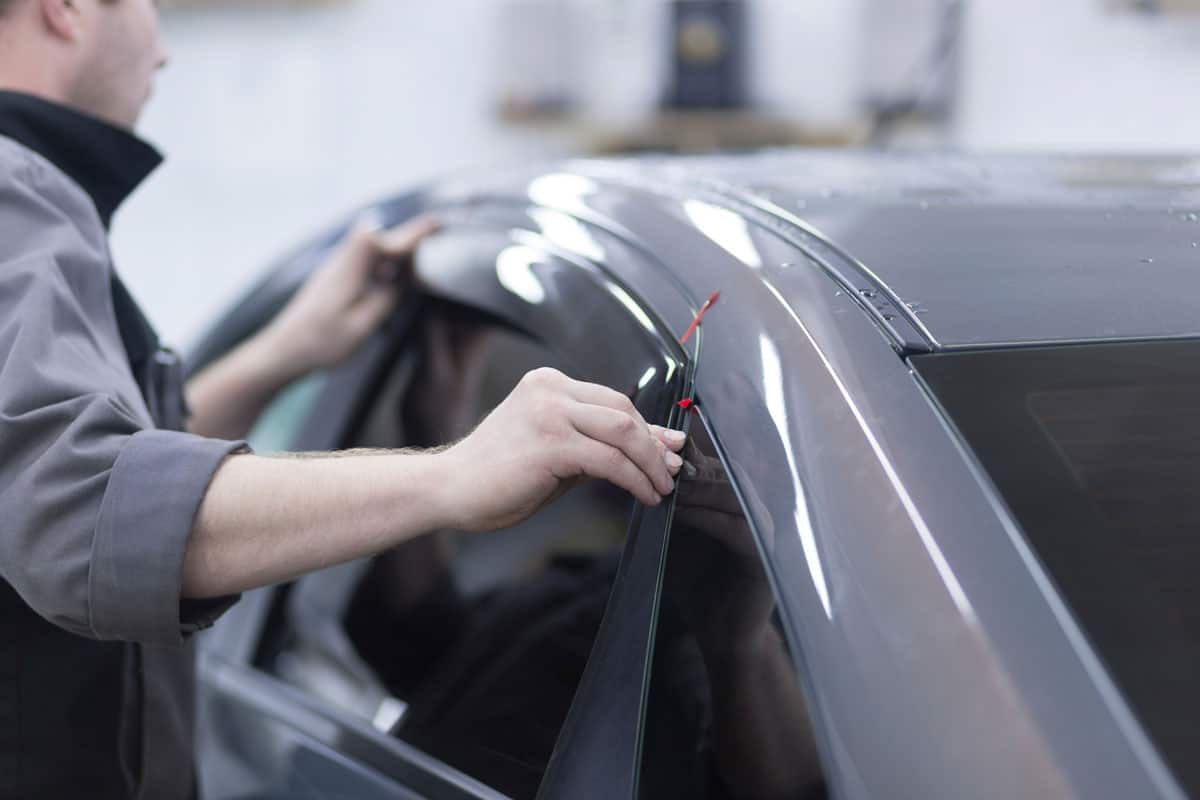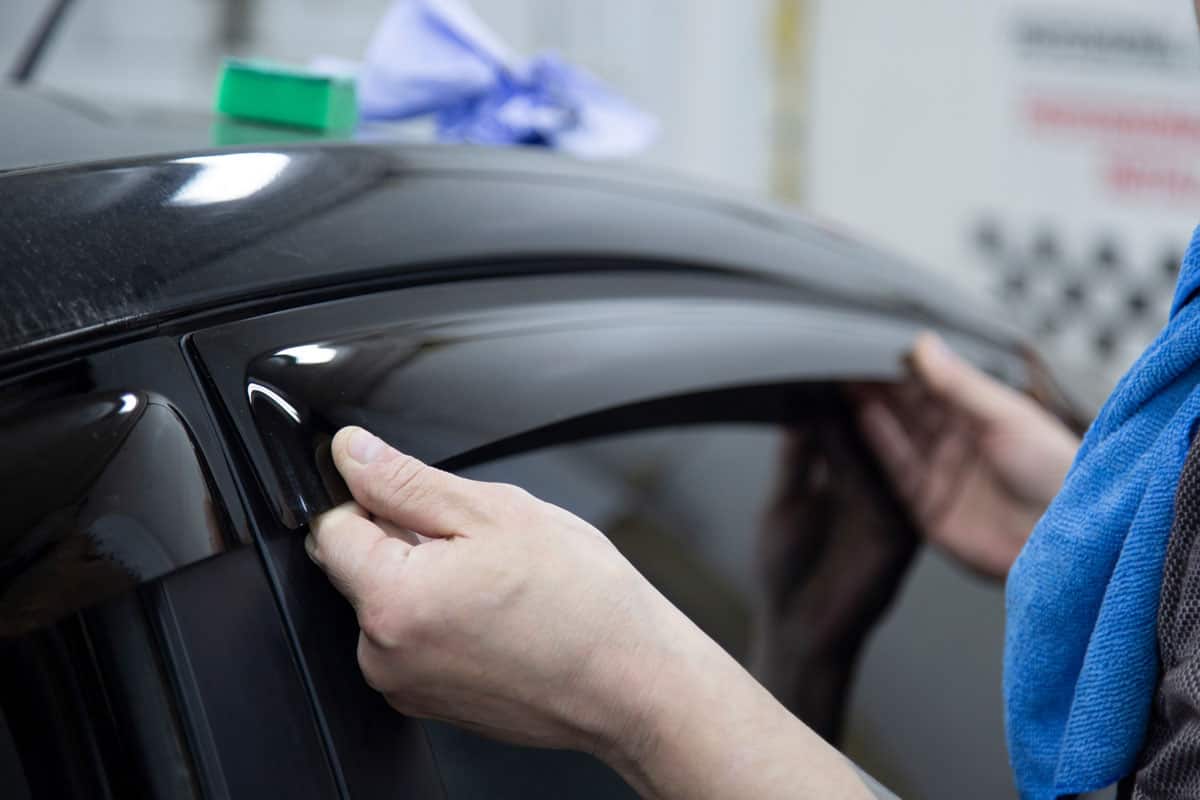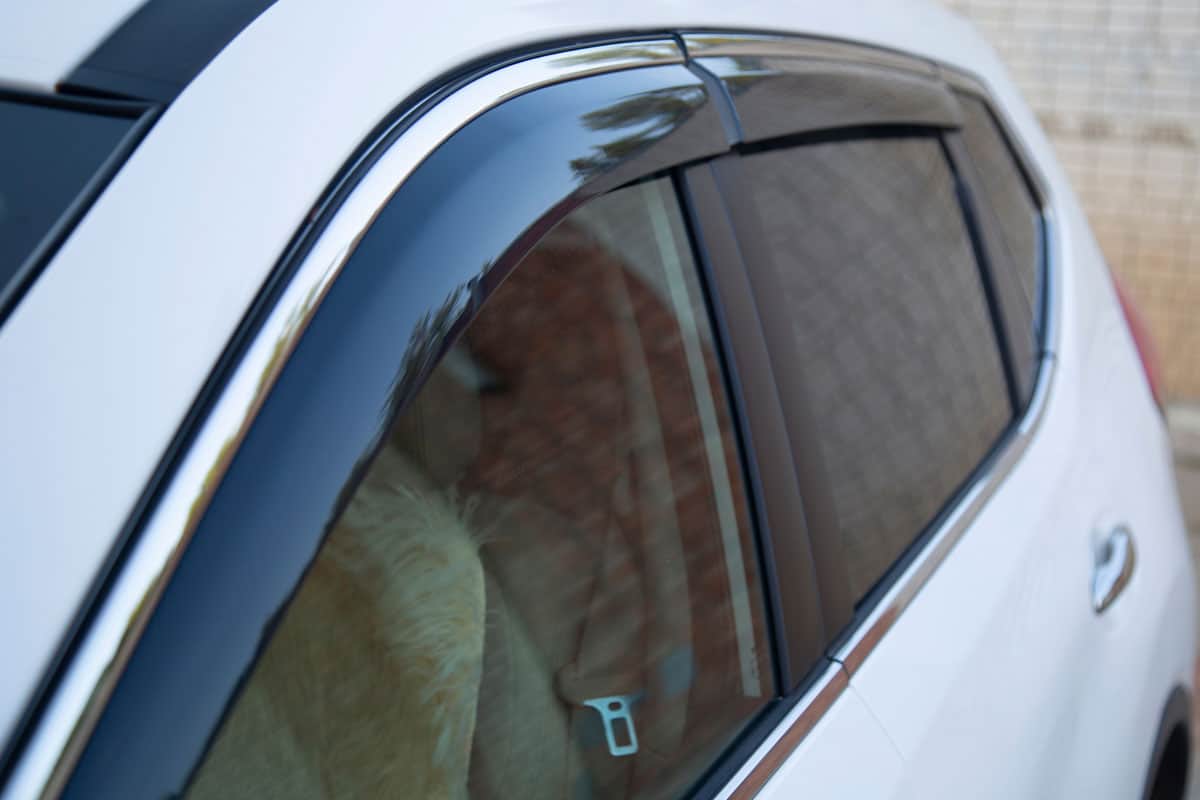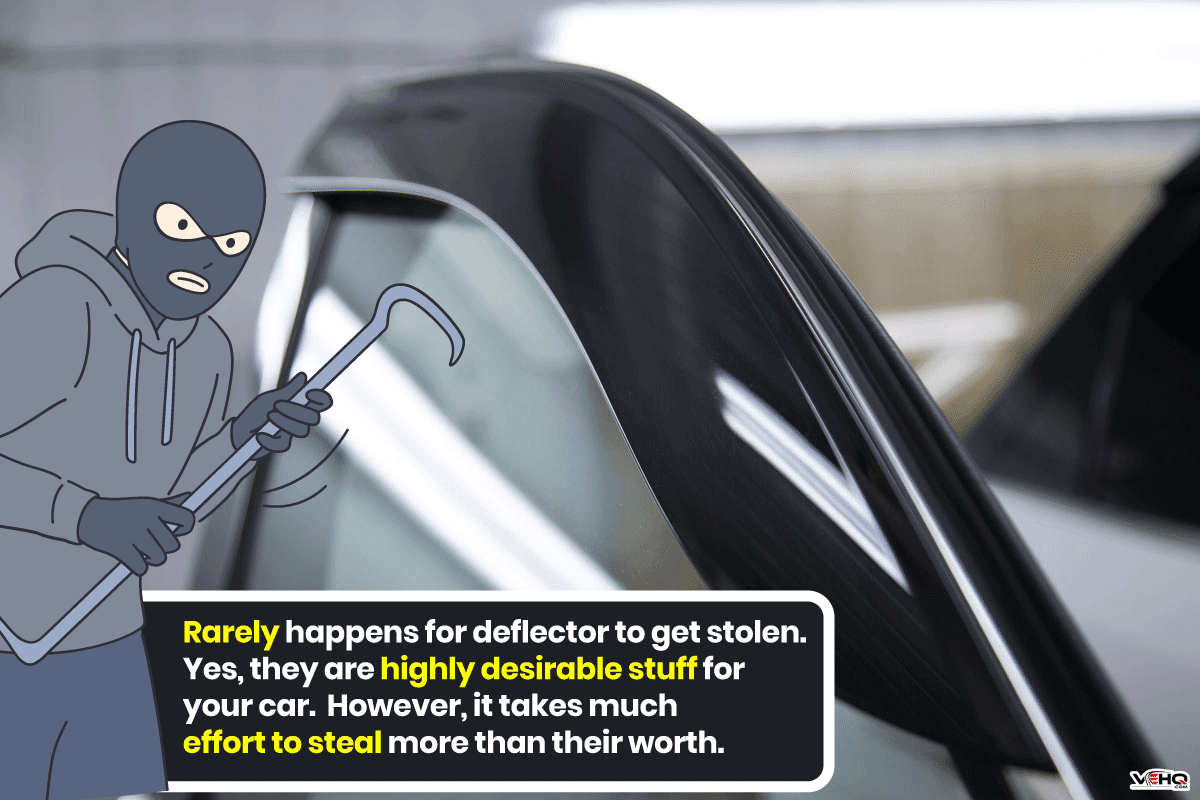Window deflectors have become a common aftermarket accessory for cars. Though they aren't strictly necessary, they are a helpful addition. At some point, you might decide to remove them but don’t know how to proceed. No worries, we got you covered. We gathered information to guide you on how to remove them.
WeatherTech window deflectors are in-channel visors. To remove them, you need to loosen the flanges' grip on the channel by pulling sideways. This is done by wiggling the deflector, so the grip gradually lessens until it pulls off.
In this post, we'll discuss the steps to remove your WeatherTech window deflector in greater detail. Stay on this page as we share more information about WeatherTech and what makes it a better brand. Keep reading!
How To Remove WeatherTech Window Deflectors

Removing your WeatherTech window deflector is fairly simple. Here are the steps:
- It is best to work with the windows rolled down to easily work on the window channel.
- Locate and remove the retainer clips, if there are any.
- Hold one of the rear ends. It is always good practice to start working on the ends of the deflector.
- Slightly wiggle the deflector while checking if its grip on the flanges gradually lessens.
- While the grip loosens, the deflector breaks away from the window channel.
- Slide it down and bend it to get one end of the deflector out.
- Continue until the deflector pulls off.
Now you've successfully worked the deflector down and gotten it detached. The removal steps aren't as complicated as you might think. You need to remove it with caution, though, so that there won't be any damage to your car's window channel and other outlying parts.
What Are WeatherTech Window Deflectors?

Window deflectors are interchangeably referred to as window visors, rain guards, or vent shades. These are car accessories installed above the door windows or the window channel. They are positioned to hang down a few inches to cover the top portion of the window.
Window deflectors come in two variants, in-channel or stick-on types. Both types work equally well, but they drastically differ in the installation and removal steps. As for other factors, each has its pros and cons.

The WeatherTech brand is known for its in-channel or track visors. This means that they are installed directly within the window channel or track. They come in direct contact with the window. What sets it apart from other brands is that they are secured in place by tension, with no exterior adhesive tape needed.
WeatherTech in-channel deflectors provide an extremely tight and snug fit. They are much more secure and stay in place when correctly installed, compared with stick-on deflectors attached with an adhesive that can easily wear over time.
The deflector snugly slides into the window channel. You don't even need any specialized tools to do it. However, in a few cases, deflector clips are needed. This is further discussed in the section below.
Check out to see this window deflector on Amazon.
You can purchase WeatherTech deflectors in sets. You will get one for the front door, the rear door, or a set for the front and rear doors. Front deflectors are typically arched and molded to follow the shape of the car door. Rear deflectors are typically rectangular.
Depending on your vehicle type, each is custom-made to fit variations in window shapes. Additionally, once you have selected a set for your car, you need to check the compatibility with the number of doors. It is because 3-door models have different window sizes from 5-door models.
There are available WeatherTech window deflectors for many car types and makes, such as Alfa Romeo, Alpina, Audi, BMW, Chevrolet, Chrysler, Daewoo, Fiat, Ford, Honda, Hyundai, Isuzu, Jaguar, Jeep, Kia, Lamborghini, Lexus, Mazda, Mercedes, Mitsubishi, Nissan, Peugeot, Toyota, Volkswagen, and Volvo.
Check out this deflector set on Amazon.
Why Do You Need To Remove The Wind Deflector?
Every car owner is well aware of the usefulness of window deflectors. While they're a useful accessory, but not always necessary. One day, you may decide to remove your window deflectors. Some of the probable reasons could be:
- Obstruction to the pillar vision of the driver, especially when making turns.
- Impedes your visibility, especially on night driving, due to the dark tint.
- Causes an annoying wind noise.
- Interference with the car window. It causes some friction when opening the windows.
- Traps heat inside the car makes cooling difficult during summer.
- The grips started to loosen. This is a sign of wear.
- It causes the window not to be fully sealed, resulting in more road noise.
- Brittle and signs of weathering due to sun exposure.
- Catch basin of snow and got damaged due to scraping.
- Peels the window tint.
- Point of attack for robbers.
- Many scratches since deflectors are prone to scratches that can't be removed.
- Signs of vandalism. Unwanted individuals can easily write on acrylic plastic material.
- Extra work of thorough wiping after a car wash since it catches water that doesn't dry easily, otherwise leaving dried water spots on the surface.
Both functionality and aesthetics are reasons why car owners remove their wind deflectors. While it can't be discounted that it is a desirable addition, some car owners are keen on how such an accessory best serves their purpose. After all, it is a relatively affordable accessory that wouldn't break your pocket, so it doesn't take a big deal if you decide to remove it.
When Are Window Deflector Clips Needed?
For every purchase of a window deflector set, you will notice that retainer clips are included in the package, but you won't always need these clips for every installation. Window deflector clips function as fillers between spaces of the wind deflector and the window channel, ensuring a snug fit.
For WeatherTech, you don't need these clips in most cases.
WeatherTech deflectors snugly slot into the window channel. But in some car and truck models, deflector clips are needed. This is because the window channel is too wide that the deflector can't achieve a snug fit.
Check out these deflector clips on Amazon.
Deflector clips also play a vital role in ensuring that the window glass doesn't come into contact with the deflector. When the windows are rolled down, the deflectors should securely stay in place, not rattling or getting displaced.
If you need extras, you can purchase deflector clips in sets. They are widely used and universally fit most cars and trucks. They are made of stainless steel, which doesn't deteriorate due to rust. They are also durable, lasting long with the lifespan of the deflector. Indeed, they enhance the usefulness of your window deflector.
Can Window Deflectors Fall Off?
Since the installation of in-channel window deflectors involves no drilling and no screws, some car owners find it logical to think that one day, their window deflector might fall off.
Well, window deflectors will not fall off. Especially for the in-channel type, these are fitted snugly and extremely secured into the window channel. Even with the strongest wind or driving at highway speed, the deflectors will not get detached and fall off.
Can Window Deflectors Get Stolen?

No! You cannot remove the in-channel window deflectors when windows are closed. Attempting to remove such will more likely result in snapping the deflector.
Deflectors are rarely stolen. While they're a desirable accessory for your car, they're just made of acrylic plastic, and it would take more effort than they're worth to steal.
There is a greater chance for stick-on window deflectors to get stolen since they are easier to remove, but this is still highly uncommon.
Are Window Deflectors Legal?
You might be worried about getting a traffic ticket for your newly-installed window deflector, but you shouldn't be bothered by that! As long as the window deflector isn't an obstruction to the driver's view, you aren't violating any statutory or federal regulation. No state directly prohibits the use of window deflectors.
Window deflectors are excluded in laws regulating windshield obstruction or window tints. You would get ticketed due to excessive tinting, illegal tinting, overly hanging stuff from the rearview mirror, and covering of license plates.
You might be interested to learn more about car tinting in this post: 15 Tint Vs. 20: What's the Difference?
Is WeatherTech Good?

On top of the custom-made fit of WeatherTech window deflectors, the brand is known for its high-quality material that affords its durability and flexibility. The materials used are authentic and OEM-grade, which can give you a longer service life.
Compared to most window deflectors in the market, it is more affordably priced. Moreover, the manufacturer gives a limited lifetime warranty for the product. You are guaranteed that every purchase has gone through quality audits and strict material inspections.
And lastly, it is proudly a US-made brand. Hence, you are assured of the highest manufacturing standards. For in-channel visors, WeatherTech has carved its name and become the preferred brand among industry gurus.
To Finish Off
That's it! It is hoped that removing your WeatherTech deflector won't pose a challenge. The removal steps are straightforward. Slowly wiggle the deflector freely to lessen the grip at the flanges of the window channel. It will gradually come off, and you can easily pull it away.
While window deflectors are relatively affordable and desirable additions to your car, their functionality and aesthetic value may be unnecessary. At some point, you may have good reason to remove it.
Before you go, check out these posts to learn more about window deflectors:


